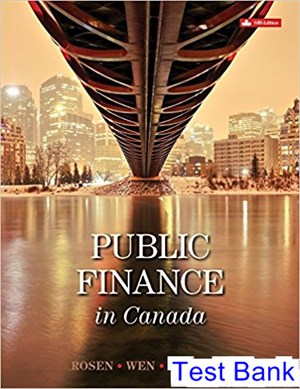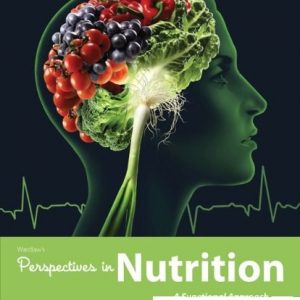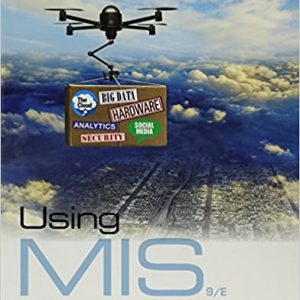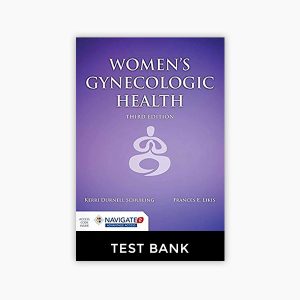This is completed downloadable of Public Finance in Canada Canadian 5th Edition Rosen Test Bank.

Product Details:
- ISBN-10 : 1259030776
- ISBN-13 : 978-1259030772
- Author: Ted Gayer
Market leading Rosen/Wen/Snodden Public Finance in Canada provides a modern treatment of the theory of public finance, and a thorough discussion of empirical issues from a Canadian perspective. Comprehensive yet flexible coverage includes an integrated introduction to tax and expenditure decisions (financing of expenditures in the chapters on health care, education, employment insurance, and public pensions), and extensive analysis of the federal-provincial dimension of the public sector in Canada.
The 5th Canadian Edition incorporates recent developments taking students to the frontiers of current research and policy. McGraw-Hill’s award winning Connect with SmartBook online resource is now available to accompany the 5th Canadian Edition of Rosen Public Finance in Canada, in addition to a wealth of instructor resources to support a wide range of teaching and learning.
Table of Content:
- Title Page
- Copyright Page
- About the Authors
- Brief Table of Contents
- Table of Contents
- Preface
- Acknowledgements
- PART ONE: Introduction
- CHAPTER 1: INTRODUCTION TO PUBLIC FINANCE IN CANADA
- Viewpoint of This Book
- Canada’s Government at a Glance
- The Legal Framework
- Federal Government
- Provincial and Local Governments
- The Size of Government
- Accounting Issues
- Hidden Costs of Government
- Some Numbers
- Expenditures
- Revenues
- Transfers
- Changes in the Real Value of Debt
- Agenda for Study
- Summary
- Exercises
- Appendix: Doing Research in Public Finance
- CHAPTER 2: FUNDAMENTALS OF WELFARE ECONOMICS
- Welfare Economics
- Pure Exchange Economy
- An Economy with Production
- The First Fundamental Theorem of Welfare Economics
- Fairness and the Second Fundamental Theorem of Welfare Economics
- Market Failure
- Market Power
- Nonexistence of Markets
- Overview
- Buying into Welfare Economics
- Summary
- Exercises
- CHAPTER 3: COST-BENEFIT ANALYSIS
- Economic Efficiency
- Distributional Considerations
- Present Value
- Projecting Present Dollars into the Future
- Discounting Future Dollars into the Present
- Inflation
- Private Sector Project Evaluation
- Internal Rate of Return
- Benefit-Cost Ratio
- Public Sector Discount Rate
- Rates Based on Returns in the Private Sector
- Social Discount Rate
- Valuing Public Benefits and Costs
- Market Prices
- Adjusted Market Prices
- Consumer Surplus
- Inferences from Economic Behaviour
- Valuing Intangibles
- Uncertainty
- Games Cost-Benefit Analysts Play
- The Chain-Reaction Game
- The Labour Game
- The Double-Counting Game
- An Application
- The Impacts of Private Hospital Rooms
- Comments
- Summary
- Exercises
- Appendix: Consumer and Producer Surplus
- PART TWO: A FRAMEWORK FOR THE ANALYSIS OF PUBLIC EXPENDITURE
- CHAPTER 4: PUBLIC GOODS
- Public Goods Defined
- Efficient Provision of Public Goods
- Deriving the Efficiency Condition
- Provision of Public Goods Financed by Distortionary Taxation
- Problems in Achieving Efficiency
- The Free-Rider Problem
- The Privatization Debate
- Public versus Private Provision
- Public versus Private Production
- Public Goods and Public Choice
- Summary
- Exercises
- CHAPTER 5: EXTERNALITIES
- The Nature of Externalities
- Negative Externalities and Economic Inefficiency
- Implications
- Conclusion
- Positive Externalities and Economic Inefficiency
- Private Responses to Externalities
- Bargaining and the Coase Theorem
- Mergers
- Social Conventions
- Public Responses to Externalities
- Taxes and Negative Externalities
- Subsidies and Negative Externalities
- Emissions Fees and Negative Externalities
- A Tradable Permit Scheme and Negative Externalities
- Regulation and Negative Externalities
- Subsidies and Positive Externalities
- Regulation and Positive Externalities
- Implications for Income Distribution
- Who Benefits?
- Who Bears the Costs?
- Summary
- Exercises
- CHAPTER 6: INCOME REDISTRIBUTION
- Distribution of Income
- Poverty
- Interpreting the Data
- Rationales for Income Redistribution
- Utilitarianism
- The Maximin Criterion
- Pareto Efficient Income Redistribution
- Nonindividualistic Views
- Other Considerations
- Cash versus In-Kind Transfers
- Asymmetric Information
- Commodity Egalitarianism
- Paternalism
- Political Motivations
- Conclusion
- Summary
- Exercises
- PART THREE: POLITICAL ECONOMY
- CHAPTER 7: PUBLIC CHOICE
- Direct Democracy
- Unanimity Rules
- Majority Voting Rules
- Majority Voting on the Quantity of a Public Good
- Logrolling
- Arrow’s Impossibility Theorem
- Representative Democracy
- Elected Politicians
- Public Employees
- Special Interests
- Other Actors
- Explaining Government Growth
- Controlling Government Growth
- Conclusions
- Summary
- Exercises
- CHAPTER 8: FISCAL FEDERALISM
- Background
- Community Formation
- The Tiebout Model
- Tiebout’s Assumptions
- Tiebout and the Real World
- Interprovincial Fiscally Induced Migration
- Optimal Federalism
- Advantages of a Decentralized System
- Disadvantages of a Decentralized System
- Efficiency Issues
- Equity Issues
- Implications
- The Role of the Constitution
- Intergovernmental Grants
- The Theory of Intergovernmental Grants
- Conditional Grants
- Unconditional Grants
- Intergovernmental Grants in Canada
- Grants and Spending Behaviour
- Overview
- Summary
- Exercises
- PART FOUR: PUBLIC EXPENDITURES IN CANADA
- CHAPTER 9: HEALTH CARE
- What is Special About Health Care?
- The Role of Insurance
- The Role of Risk Pooling
- Asymmetric Information in the Health Insurance Market
- How Adverse Selection Can Cause Failure in the Insurance Market
- Moral Hazard and Market Failure
- Other Problems in the Health Care Market
- National Medicare in Canada
- The Canada Health Act
- The History of Canadian Health Care Financing
- Trends in Health Expenditures
- Comparing Health Systems Around the World
- Challenges and Future Directions
- Summary
- Exercises
- CHAPTER 10: EMPLOYMENT INSURANCE
- Unemployment in Canada
- The Rationale for Public Employment Insurance
- Market Failure in the Provision of Employment Insurance
- Employment Insurance as an Income Redistribution Program
- The History of the Canadian Employment Insurance System
- The Creation of the UI Program
- The 1971 Reforms
- UI: 1980 to 1994
- Employment Insurance Today
- The Labour Market Effects of Employment Insurance
- Direct Effects
- Systemic Effects
- Macroeconomic Effects
- The Distributional Effects of Employment Insurance
- The Distribution of Employment Insurance Benefits
- The Burden of EI Financing
- Regional Redistribution Through Employment Insurance
- Experience-Rated Premiums
- Conclusion
- Summary
- Exercises
- CHAPTER 11: PUBLIC PENSIONS
- Public Intervention in the Provision of Retirement Incomes
- Effects of Public Pensions on Economic Behaviour
- Saving Behaviour
- Empirical Evidence on Savings
- Retirement Decisions
- Implications
- The Old Age Security Program
- Universal versus Targeted Income Transfers
- Population Aging
- The Canada Pension Plan
- Analysis of the CPP Contribution Increases
- The 1998 Reforms to the CPP
- Intergenerational Redistribution through the CPP
- Conclusion
- Summary
- Exercises
- CHAPTER 12: SOCIAL WELFARE PROGRAMS
- Welfare Programs: Descriptions and Trends
- Who Needs Social Assistance?
- Who Receives Welfare?
- The Level of Social Assistance Benefits
- Are Welfare Incomes Adequate?
- Welfare Programs and Work Incentives
- The Basic Tradeoffs
- Analysis of Work Incentives
- Empirical Evidence on Disincentive Effects
- Welfare Dependence
- Welfare Alternatives and Ongoing Challenges
- Negative Income Tax
- Workfare
- Ongoing Challenges
- Summary
- Exercises
- CHAPTER 13: EDUCATION
- Justifying Government Intervention in Education
- Is Education a Public Good?
- Does Education Generate Positive Externalities?
- Is There a Market Power Problem?
- Is There an Asymmetric Information Problem?
- Distributional Considerations
- The Control and Funding of Education in Canada
- Elementary and Secondary Education
- Post-Secondary Education
- What does Government Intervention in Education Accomplish?
- More Spending, Better Performance?
- Education Spending and the Quality of Education
- Education Spending and Earnings
- Challenges and New Directions
- Summary
- Exercises
- PART FIVE: A FRAMEWORK FOR TAX ANALYSIS
- CHAPTER 14: TAXATION AND INCOME DISTRIBUTION
- Tax Incidence: General Remarks
- Only People Can Bear Taxes
- Both Sources and Uses of Income Should be Considered
- Incidence Depends on How Prices are Determined
- Incidence Depends on the Disposition of Tax Revenues
- Tax Progressiveness Can be Measured in Several Ways
- Partial Equilibrium Models
- Unit Taxes on Commodities
- Ad Valorem Taxes
- Taxes on Factors
- Commodity Taxation with Monopoly
- Taxes on Profits
- Tax Incidence and Capitalization
- General Equilibrium Models
- Tax Equivalence Relations
- The Harberger Model
- Analysis of Various Taxes
- Some Qualifications
- Applied Incidence Studies
- Partial Equilibrium Analysis
- General Equilibrium Analysis
- Conclusions
- Summary
- Exercises
- CHAPTER 15: TAXATION AND EFFICIENCY
- Excess Burden
- Excess Burden: Questions and Answers
- Excess Burden Measurement with Demand Curves
- Pre-existing Distortions
- The Excess Burden of a Subsidy
- The Excess Burden of Income Taxation
- Differential Taxation of Inputs
- Does Efficient Taxation Matter?
- Summary
- Exercises
- Appendix A: Formula for Excess Burden
- Appendix B: Multiple Taxes and the Theory of the Second Best
- CHAPTER 16: EFFICIENT AND EQUITABLE TAXATION
- Optimal Commodity Taxation
- The Ramsey Rule
- Vertical Equity
- Summary
- Optimal User Fees
- Summary
- Optimal Income Taxation
- Edgeworth’s Model
- Modern Studies
- Politics and the Time Inconsistency Problem
- Other Criteria for Tax Design
- Horizontal Equity
- Costs of Running the Tax System
- Tax Evasion
- Overview
- Summary
- Exercises
- PART SIX: THE CANADIAN REVENUE SYSTEM
- CHAPTER 17: THE PERSONAL INCOME TAX
- Basic Structure
- Defining Income
- Items Included in H-S Income
- Some Practical and Conceptual Problems
- Evaluating the H-S Criterion
- Excludable Forms of Money Income
- Capital Gains
- Employer Contributions to Benefit Plans
- Gifts and Inheritances
- Deductions and Tax Credits
- Child Tax Benefits
- Tax Credits versus Deductions
- Impact on the Tax Base and Taxes Payable
- Tax Expenditures
- The Simplicity Issue
- Rate Structure
- Rates and Brackets
- Factors Affecting Marginal Rates
- The Alternative Minimum Tax
- Effective versus Statutory Rates
- The Final Calculation
- Choice of Tax Unit
- Background
- Taxes and Inflation
- How Inflation Can Affect Taxes
- Coping With the Tax/Inflation Problem
- Treatment of International Income
- Summary
- Exercises
- CHAPTER 18: PERSONAL TAXATION AND BEHAVIOUR
- Labour Supply
- Theoretical Considerations
- Empirical Findings on Labour Supply
- Some Caveats
- Labour Supply and Tax Revenues
- Overview
- Saving
- Empirical Findings on Saving
- RRSPs, RPPs, TFSAs, and Saving
- Taxes and the Capital Shortage
- Housing Decisions
- Proposals for Change
- Portfolio Composition
- A Note on Politics and Elasticities
- Summary
- Exercises
- CHAPTER 19: CONSUMPTION TAXATION
- Overview
- Reasons for Consumption Taxes
- Administrative Considerations
- Efficiency Issues
- Equity Issues
- Canada’s Value-Added Tax: The GST and HST
- How a Value-Added Tax Works
- Implementation Issues
- Efficiency and Distributional Implications of the Rate Structure
- Improving the GST
- Provincial Broad-Based Sales Taxes
- Excise Taxes and Customs Duties
- Personal Consumption Tax
- Hall-Rabushka Flat Tax
- Administrative Issues
- Summary
- Exercises
- CHAPTER 20: TAXES ON WEALTH AND PROPERTY
- Wealth Taxes
- Property Taxes
- Property Tax Assessments
- Incidence and Efficiency Effects: Traditional View-Property Tax as an Excise Tax
- Incidence and Efficiency Effects: New View-Property Tax as a Capital Tax
- Incidence and Efficiency Effects: Property Tax as a User Fee
- Reconciling the Three Views
- The Future of the Property Tax
- Some Final Comments
- Summary
- Exercises
- CHAPTER 21: THE CORPORATION TAX
- Introduction
- Why Tax Corporations?
- Structure
- Corporate Income Tax Statutory Rates
- Wage Payments Deducted
- Depreciation Deducted
- Investment Tax Credits
- Treatment of Interest
- Treatment of Dividends
- Treatment of Retained Earnings
- Tax Expenditures under the Corporate Income Tax
- Effective Tax Rate on Corporate Capital
- Incidence and Excess Burden
- A Tax on Corporate Capital
- A Tax on Economic Profits
- Effects on Behaviour
- Total Physical Investment
- Types of Asset
- Corporate Finance
- Taxation of Multinational Corporations
- Evaluation
- Corporation Tax Reform
- The Partnership Method
- Other Methods
- Nature of the Corporation
- Administrative Feasibility
- Effects on Efficiency
- Effects on Saving
- Effects on the Distribution of Income
- Overview
- Summary
- Exercises
- Glossary
- References
- Index





